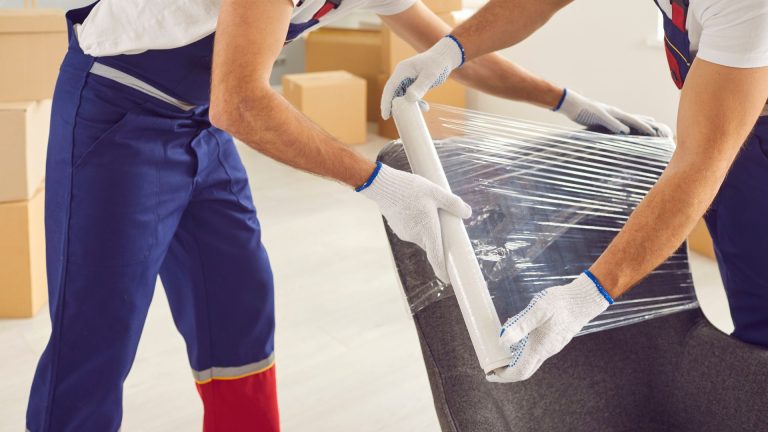Moving house is challenging at the best of times, and dealing with large furniture can feel like a whole new hurdle. We have all been there—attempting to guide a bulky closet through a narrow corridor, only to discover it simply will not fit.
Do not panic, though. You can disassemble and pack even the heaviest objects without breaking a sweat with a little planning and some simple tools. We will coach you through the whole process.
Why Thorough Disassembly Matters

First of all, why should you go into trouble with disassembling your large furniture? Surely, it is simpler to leave everything as it is. Well, not exactly.
Moving fully assembled pieces not only makes the task more challenging but could also damage your home and the pieces themselves. You do not want to risk scraping walls, breaking furniture legs, or, worse, injuring yourself.
Disassembling your furnishings can save space on the moving truck, reduce the likelihood of damage, and make navigating tight spaces much easier.
Many removal companies also require that some pieces be disassembled before carrying them. Therefore, a little work today will help you avoid much trouble later on.
That said, you should do it correctly. Rushing through the procedure could cause misplaced pieces, lost screws, and uncertainty when putting everything back together in your new property.
Tools You Will Need
You should have the correct tools right at hand before beginning to unscrew anything. Although most furniture can be dismantled with simple home equipment, it is sensible to confirm you have everything you require before starting.
Here is a basic checklist:
- Phillips and flathead screwdrivers;
- Allen keys also referred to as hex keys;
- Adjustable wrench;
- Hammer;
- Ziplock bags for screws;
- Labelling marker;
- Masking tape;
- Protective covers, such as bubble wrap or blankets.
Most flat-pack furniture, including IKEA pieces, can be dismantled using an Allen key and screwdriver. However, more complicated objects like antique closets or solid wood tables sometimes need extra tools.
Step-by-Step Disassembly Guide
It is time to start disassembling your furnishings now that you have all the tools needed. Use these guidelines to have a neat and orderly process.
Empty the Space
Make sure you have adequate workspace before you start. Clear smaller objects and clutter to make sure the surrounding area of the piece of furniture is free.
This will not only simplify the disassembly procedure but will also help avoid possible tripping.
Study the Directions
Now is the moment to hunt out assembly instructions for your furniture. These will ensure that you do not overlook any important stages and help you negotiate the disassembly procedure backwards.
Do not worry about it if you have lost the handbook, though. Directions are often found online with the model’s number or furniture’s name.
Clear Completely
Start by removing any loose objects, including drawers, shelves, or cushions. The furniture will be lighter and easier to move as a result.
For things like sofa cushions, consider keeping them together and avoiding any damage during the transfer using big bags.
Address the Major Components
Concentrate on the major structural elements. For instance, before working on the headboard and footboard from a bed frame, take off the slats and side rails. To prevent confusion, always work methodically, one piece at a time.
Use your marker and masking tape to label every part you remove screws or bolts from. Reassembly will be much simpler this way, saving you from a later annoying guessing game.
Store bolts, screws, and small bits in ziplock bags, and identify each bag with the matching piece of furniture.
Handle Delicate Objects Carefully
If mirrors or glass panels abound in your furniture, be extra careful when removing these. Wrap them in moving blankets or bubble wrap. Consider taping an ‘X’ across the glass using masking tape, as this lowers breaking risk and helps absorb shocks.
Efficiently Boxing Dismantled Furniture
Now is the time to get everything ready for the move. Pack your pieces carefully to make sure they arrive at your new home in excellent condition.
Wind Every Piece Cautiously
Cover every surface of the furniture using bubble wrap, furniture blankets, or old towels. Given their highest susceptibility to damage, pay close attention to edges and corners.
Plastic wrap can trap moisture and lead to warping or discolouration, hence avoid using it directly on hardwood furniture.
Label Everything
Mark every piece you pack with a description and the place it belongs in. For instance, ‘Dining table leg 1’ or ‘Wardrobe door – bedroom.’ This will make determining where everything goes during reassembly far simpler.
Bundle Like Components
When packing, try to keep like-parts together, such as chair legs or bed frame slats. As a result, when you are unpacking, this not only saves room but also facilitates finding things.
Separately Pack Smaller Parts
Fit all those bolts, screws, and tiny parts you have been meticulously stowing in ziplock bags in a separate well-labelled box or bag. Keeping these items near the matching furnishings will help you avoid wasting time later searching for them.
Load Wisely
If you are relocating yourself, be careful when transferring dismantled furniture onto the moving vehicle.
Sort lighter and more delicate components on top and heavier objects on the bottom. Securing things in place with straps or ropes will also help in reducing movement during transportation.
Tip: Taking photos of your furniture in its assembled state (especially joints and configurations) can be a lifesaver when it is time to reassemble. Visual references make it easier to remember precisely how parts should fit together, reducing guesswork later.
Why You Should Consider a Moving Provider
Disassembling and packing large furniture is no small task, and while you could handle it yourself, enlisting the help of professionals is often worth considering.
Removal companies offer services such as packing, disassembly, and reassembly, saving you significant time and effort during the moving process.
Moreover, using specialists ensures that even the most intricate or heavy items, such as antique cabinets or custom-made tables, are handled with care. Their knowledge and tools help prevent damage while ensuring safe transit.
An additional advantage is the protection offered through insurance, safeguarding valuable possessions against unforeseen accidents during the move. This coverage is particularly reassuring when dealing with high-value or sentimental pieces.
Experienced teams can also navigate obstacles like tight spaces, narrow staircases, or restricted zones with ease, overcoming logistical hurdles that would otherwise cause significant delays or damage.
When choosing a company, consider factors like strong customer feedback, clear pricing structures, and professional credentials. Recommendations from trusted sources and comparative quotes can assist in making a confident decision.
Although involving experts entails some cost, the combination of efficient service, damage protection, and peace of mind makes it a worthwhile investment for any move.
Conclusion
With thoughtful preparation, the correct equipment, and, if necessary, specialised guidance, handling large pieces of furniture need not be daunting.
By methodically dismantling, wrapping, and labelling each component, you will protect treasured belongings while streamlining the entire process.
Once you arrive in your new home, reassembly will be straightforward, letting you settle in quickly and focus on enjoying your fresh surroundings.











